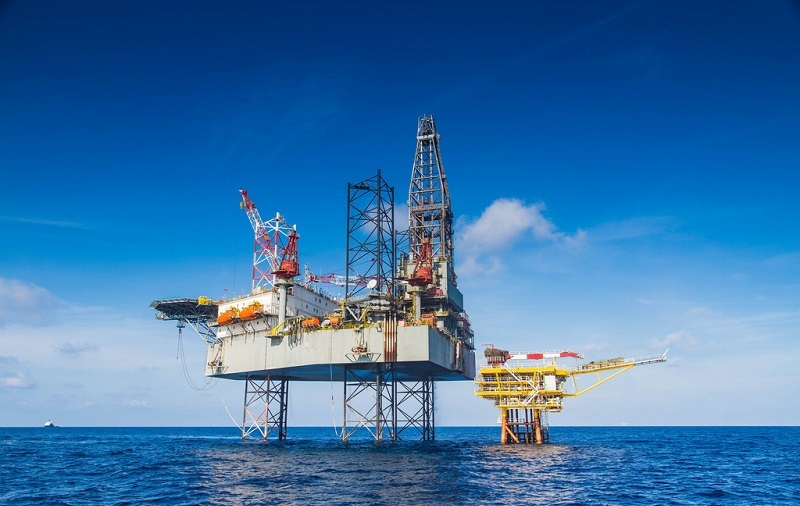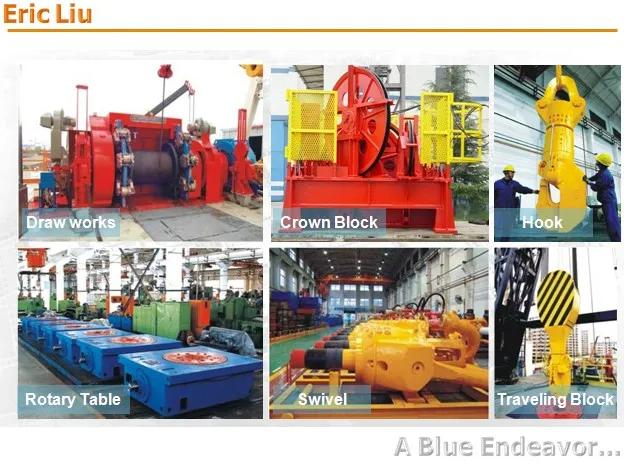How offshore oil drilling works
Offshore oil drilling is a complex undertaking that requires the use of advanced equipment and technology. In general, the working principle of offshore oil drilling can be divided into the following steps:
First, exploration and exploration work is needed to determine the location of geological structures and oil and gas reservoirs. This process requires the use of various exploration techniques and equipment, such as seismic surveys and survey vessels.
Next, pre-drilling preparations are required, including selecting drilling locations, designing drilling proposals, and purchasing and transporting equipment. This process needs to take into account offshore environmental factors such as waves, currents, and wind, as well as the safety and reliability of the equipment.
The difference between offshore drilling and land drilling:
Offshore oil drilling is a drilling project carried out in the offshore area of the continental shelf for the exploration and development of oil and gas on the seabed. Drilling depths are typically several kilometers. At present, the deepest offshore oil drilling can reach more than 6,000 meters.

Offshore oil drilling differs from land in four main ways:
First, how to smoothly erect a derrick above the surface of the water and withstand the attack of wind and waves;
The second is how to build a special wellhead device between the turntable and the seabed to isolate the seawater from the wellbore;
Third, there are fewer straight wells in offshore drilling and more inclined wells, and there must be offshore drilling platforms to ensure the normal operation of drilling rigs and other drilling equipment;
Fourth, the cost of offshore drilling is high, which is 3 to 10 times higher than onshore drilling.
Technical status of shallow water drilling equipment
Shallow water drilling platforms are generally adapted to the working water depth of less than 150m, mainly including seated bottom platforms, jacket platforms, jack-up platforms, etc., but also include shoals, artificial islands, and other operation modes of fixed platforms, and its supporting drilling equipment is mainly modular drilling rigs or drilling rigs. At present, China can provide offshore module drilling rigs with drilling depths of 12,000m and below. Conventional equipment such as tower derricks, winches, mud pumps, and other conventional equipment of jack-up platform drilling systems can be independently produced in China, and in general, shallow water drilling equipment domestic enterprises can achieve independent production support.
Technical status of deepwater drilling equipment
Deepwater drilling platforms mainly include tension leg platforms (TLP), column platforms (SPAR), semi-submersible platforms, and drilling ships. With the continuous increase of working water depth, the TLP platform and SPAR platform have no advantages in adaptability and economy, and the current global mainstream deepwater and ultra-deepwater drilling platforms are mainly semi-submersible platforms and drilling ships. The “TIGER-1” deepwater drilling ship, with a maximum operating water depth of 1524m and a maximum drilling depth of 10,000m, is equipped with drilling system equipment, such as a heave compensation system, top drive, pipe string treatment system, etc., with conventional equipment such as derricks, winches, and mud pumps. The international semi-submersible drilling platform has developed to the seventh generation, and its significant features are the use of DP3 dynamic positioning, the operating water depth exceeding 12000ft (3658m), the maximum drilling depth exceeding 40000ft (12192m), adopts double wellhead operation mode, and is equipped with double drilling lifting system.
Marine dynamic derricks
Marine dynamic derricks mainly include single derrick, one and a half derricks, main and auxiliary derricks and double main derricks, etc., and the mainstream deepwater drilling platforms or drilling ships in the world all adopt the duplex derrick mode. Duplex derricks are usually divided into two types, one is a fully hydraulic duplex derrick (RAMRig); The other is a duplex tower derrick lifted by a variable frequency winch. The all-hydraulic duplex derrick adopts multiple sets of hydraulic cylinder lifting system, which replaces the transmitted winch lifting system, which has the advantages of small size, light weight, low noise, high degree of automation and good safety. At present, such derricks have not been built independently in China.
Drilling pump set
Current floating drilling platforms or drilling ships are usually equipped with 4-5 sets of 2200hp high-pressure drilling pumps or 3-4 sets of 3000hp high-pressure drilling pumps. Domestic high-power high-pressure drilling pump technology has been relatively mature 2200hp three-cylinder high-pressure drilling pump, in 2010 developed the first 3000hp three-cylinder high-pressure drilling pump in China, in recent years has developed 2200hp, 3000hp five-cylinder high-pressure drilling pump, annual output of more than 600 units;
Drill string heave compensation system
The drill string heave compensation system is mainly used to overcome the influence of wave upward and downward heaving movement on the drill string and maintain the constant drilling pressure at the bottom of the drill string. According to the installation position and structural form of the compensation system, it can usually be divided into four types: tour car compensation, overhead crane compensation, winch compensation and dead rope compensation; According to the power supply mode, it can be divided into three types: active compensation (AHC), passive compensation (PHC) and semi-active compensation (SAHC).
String automatic processing system
The automatic processing system of pipe string is mainly used to replace the manual realization of pipe string transportation, upper shackle, discharge and other operations, and is the key technology and supporting equipment of modern automatic and intelligent drilling. At present, the offshore module drilling machine supporting the fixed platform has begun to support some pipe string automatic processing unit equipment, such as iron driller, second-layer pipe row manipulator, etc. The automatic pipe string processing system for floating drilling platforms or drilling ships used in deepwater operations can usually be divided into two types: bridge pipe pipe pipe system and column pipe system, and it has offline root establishment function.
Drilling riser system
At present, the maximum working depth of the riser in service worldwide is recorded as 3628m (in the Angolan area of West Africa), and the maximum load level is 3500KIPS. All supporting equipment of the riser system includes lifting tools, chucks, steering joints, diverters, tight rings, telescopic devices, single riser pipes, perfusion valves, flexible joints, lower riser assembly (LMRP), riser buoyancy block, etc. The international mainstream riser joint forms mainly include three types: lock block type, flange type and quick connection type.
Underwater BOP system
The underwater blowout preventer (BOP) is installed on the seabed, the upper part is connected to the riser system, and the lower part is connected to the underwater wellhead device or underwater oil production tree, which is the most important well control equipment for deepwater drilling operations. The working pressure of the mainstream foreign underwater blowout preventer is 15000psi (103.5MPa), the maximum working pressure can reach 20000psi (153.5MPa), and the working water depth can reach more than 3000m. Underwater BOP systems typically consist of a lower riser assembly (LMRP), a lower BOP group (LBOP), and a control system.



Follow Us